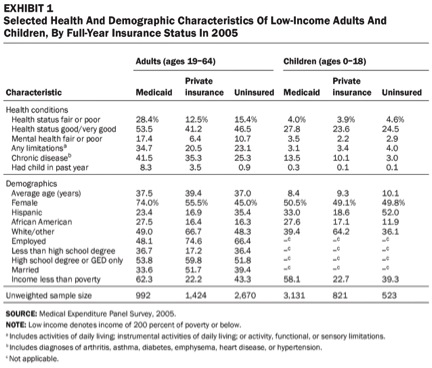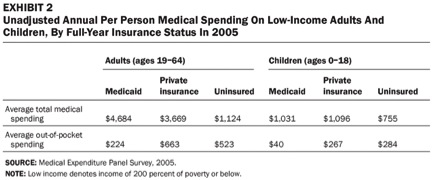Facts and Misuse Of Facts
Stanley Feld M.D.,FACP,MACE
All of us try to understand
the facts and make logical decisions by synthesizing the facts.
There is a lot of
misinformation and disinformation being printed. This misinformation and
disinformation leads to the wrong conclusions because the facts are inaccurate.
A master purveyor of this misinformation and
disinformation is Paul Krugman.
I believe his misuse of
facts is icreasing as he is subconsciously realizing his ideology is incorrect.
Here are a few examples of
disinformation or misinformation in Paul Krugman’s most recent article “Mooching
off of Medicaid”
“For there
is a lot of price-gouging in health care — a fact long known to health care
economists but documented especially graphically in a recent article
in Time magazine. “
This is true. The margins on hospital systems
retail prices are outrageous. The margins on some discounted hospital system prices
are equally outrageous.
There is a continuous price war between hospital
systems and payers (government and healthcare insurance companies).
The uninsured and under insured primary stakeholders
(consumers) are stuck with these outrageous prices.
"As Steven
Brill, the article’s author, points out, individuals seeking health care can
face incredible costs, and even large private insurance companies have limited
ability to control profiteering by providers."
This statement is not quite true. Most people
have healthcare insurance. The healthcare insurance industry and government
have negotiated discounted prices that are as low as 10% of the retail prices
published in Steven Brill’s article.
In the struggle to retain providers, private
insurance companies offer slightly higher prices than the government.
The healthcare insurance industry knows the
government’s exact reimbursement prices. The private insurance companies
provide the administrative services for the government’s healthcare plans.
Individuals not under the umbrella of these discounted
prices are liable for these high prices. As insurance premiums increase,
employers are reducing insurance coverage for employees.
The deductibles and co-pays are increasing to unaffordable
levels for everyone as an increasing numbers of employees are becoming under insured.
“For there
is a lot of price-gouging in health care —"
Price gouging is the result of a lack of
transparency and special deals the government and the healthcare insurance
industry makes with certain hospital systems
“Medicare
does much better at preventing price gouging , and although Mr. Brill doesn’t point this out, Medicaid — which has
greater ability to say no — seems to do better still”.
This is false. There are fewer physicians
seeing Medicaid patients because reimbursement is very low. In fact, in most
cases physician reimbursement is lower than physician overhead. The result is
access to care for a Medicaid patient is restricted. The access to care for
private insured patients is not.
Hospitals receive a bonus for
seeing Medicaid patients. This fact is not transparent and known by few.
“And
despite some feeble claims to the contrary, privatizing Medicaid will end up
requiring more, not less, government spending”,
Paul Krugman makes declarative statements as if
they are unequivocal evidence.
“because
there’s overwhelming evidence that Medicaid is much cheaper than private insurance.”
The evidence in Paul Krugman’s quoted study is
not that overwhelming.
I reviewed this 2008 study. The demographic
difference of the Medicaid group compared to the privately insured group is
different. The difference can reveal alternate conclusions.
Note the demographic differences of the Medicaid
vs. Private insurance patients.
Heath status good
53.5% vs 41.2%
Mental health 17.4 % vs
6.4%
Hispanic 23.4% vs 16.9%
African American 27.5%
vs 16.4%
White 49% vs 66%
Employed 48% vs 74.6%
No hi school degree 36.7% vs 17.2%
Married 33.6% vs 51.7%
Income less than poverty 62.3% vs 22.2%
An alternate conclusion could be that it is too
difficult for Medicaid patients to find a physician. Medicaid patients are more
poorly educated. The do not seek physicians’ help compared to the privately
insured group. Medicaid patients cannot afford the minimal out of pocket
expenses.
To my amazement the unadjusted annual per person
Medicaid spending was higher in this article for the Medicaid insured group
than the privately insured group by $1000.
Paul Krugman states Medicare
and Medicaid have lower administrative costs.
“Partly
this reflects lower administrative costs, because Medicaid neither advertises
nor spends money trying to avoid covering people”.
He goes on to say.
“But a lot
of it reflects the government’s bargaining power, its ability to prevent price
gouging by hospitals, drug companies and other parts of the medical-industrial
complex.”
The government does have
bargaining power. However reimbursement to physicians is so low that it is
difficult for Medicaid patients to find a physician.
This could be a reason
Medicaid costs are lower than privately insured patients with a high school
education and a job.
Acute care hospitals have a
10% Medicaid threshold. They can also be eligible for incentive pay.
“In addition, to be eligible to receive a
Medicaid EHR incentive payment, acute care hospitals must also meet a 10
percent Medicaid patient volume threshold.”
Paul
Krugman and others conclude,
Physicians receive only 9% of healthcare
dollars spent. The real facts are physicians write orders for the inflated services
of the hospital systems without receiving financial benefit. In fact, the
government restricts physician participation. Physicians’ reimbursement
decreases yearly.
It is very easy to draw the
wrong conclusions when relying on inaccurate facts from so called experts.
The real challenge is to
dig down and get the correct facts.
This is not done because
ideology, non-transparency and bias stand in the way. This contributes to the
healthcare system becoming more dysfunctional and costly each year.
Healthcare policy errors are made because
policy is made using incorrect facts.
The opinions expressed in the blog “Repairing The Healthcare System” are, mine and mine alone.
If you have enjoyed it please have a friend subscribe

